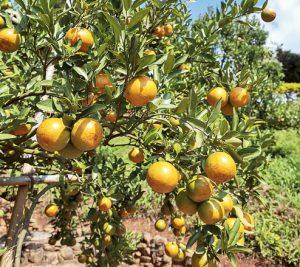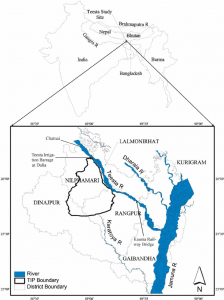An Introduction to Economy of Sikkim
Sikkim is surrounded by vast stretches of Tibetan Plateaus in the north, the Chumbi Valley of Tibet and the Kingdom of Bhutan in the east, the Kingdom of Nepal in the west and Darjeeling district of West Bengal in the south. Sikkim has several snow-capped peaks including Kanchenjunga, the world’s third highest peak that attracts a large number of tourists from across the globe. The state has been able to bag seven out of 25 central government’s national projects to promote India as destination for adventure tourism globally.
The gross state domestic product (GSDP) of Sikkim expanded at a high compound annual growth rate (CAGR) of 19.44 per cent between 2004-05 and 2015-16.
There has been a drastic shift in the sectoral contribution from primary and tertiary to the secondary sector. In 2015-16, the secondary sector contributed 67.73 per cent to the state’s GSDP at current prices. It was followed by the tertiary sector at 23.65 per cent and primary sector at 8.62 per cent. Moreover, at a CAGR of 33.91 per cent, the secondary sector has been the fastest growing among the three sectors from 2004-05 to 2015-16. It was driven by manufacturing, construction and electricity, gas & water supply.
Agricultural Sector
The state’s economy is largely agrarian, based on the terraced farming of rice and the cultivation of crops such as maize, millet, wheat, barley, oranges, tea and cardamom. Sikkim produces more cardamom than any other Indian state, and is home to the largest cultivated area of cardamom
Sikkim has a suitable climate for agricultural and horticultural products. It supports multiple crops; viz., rice, wheat, maize, millet, barley, urad, pea, soya bean, mustard and large cardamom. Sikkim is the top producer of large cardamom, contributing over 80 per cent to India’s total production. As per the state budget 2016-17, Sikkim got certified as first fully organic state in India by the Central Ministry of Agriculture and Farmers’ Welfare as well as other recognized agencies of the country.
Organic Farming
Sikkim has been transformed as the first Organic State of the country and the world by design and have opened unlimited opportunities in sectors like Agriculture, Horticulture and Animal Husbandry.
Currently, state is exporting large cardamom, ginger, buckwheat, turmeric and cymbidium orchids. Our aim has been to fulfil the domestic market and export our surplus production outside the state.
Under the National Mission on Agricultural Extension & Training, new emerging organic technologies are being disseminated to the farmers through training, demonstration, farm schools, exposure visits, formation of commodity interests groups and food security groups, etc.
The Sikkim Organic Mission is introducing an e-voucher card system as an effective mechanism to distribute assistances under the Direct Benefit Transfer for ensuring that the Scheme’s funds are channeled directly to the beneficiaries. This would be a first of its kind initiative in Sikkim and probably in the Country as well.
Industrial Sector
There has been a drastic shift in the sectoral contribution from primary and tertiary to the secondary sector. The overall performance of the economy of the state during 2015-16 was encouraging. At a CAGR of 33.91%, the secondary sector witnessed the fastest growth among the three sectors during 2004-05 to 2015-16. It was driven by manufacturing, construction and electricity, gas & water supply. In 2015-16, the secondary sector contributed 67.73% to the state’s GSDP at current prices.
The state follows the North East Industrial Investment Promotion Policy, 2007, which provides several incentives and concessions for investment. Institutional support is provided through various central and state government agencies viz., North East Council, Ministry of Development of North Eastern Region and Commerce and Industries Department.
The main industries like Brewing, distilling, tanning and watchmaking are located in the southern regions of Sikkim.
A small mining industry exists in the state, extracting minerals such as copper, dolomite, talc, graphite, quartzite, coal, zinc and lead. Sikkim has identified Rangpo-Gangtok, Melli-Jorethang, Jorethang-Rishi and Ranipool-Gangtok as industrial corridors with provision for giving land to investors on a lease basis.
The units that are engaged in the manufacturing sector are mainly dealing with pharmaceuticals, chemicals, liquors, foam mattresses, food products, iron rods, etc.
Sikkim has identified agro-based industries, horticulture and floriculture, minor forest-based industries, animal husbandry and dairy products, tourism-related industries, IT including knowledge-based industries, precision oriented high value-low volume products, hydro-power, tea, education and hospitality as thrust sectors.
The Information Technology (IT) Department, Government of Sikkim is in the process of setting up a state-of-the-art IT Park and National Institute of Electronics and Information Technology (NIELIT) at Pakyong.
The state has attracted Foreign Direct Investment (FDI) equity inflows worth US$ 3.93 billion during the period April 2000 to March 2016, according to data released by Department of Industrial Policy and Promotion (DIPP).
Tertiary sector
Industrial sector was followed by the tertiary sector at 23.65% and primary sector at 8.62%. The tertiary sector grew at a CAGR of 15.23% between 2004-05 and 2015-16. The growth has been driven by trade, hotels, real estate, finance, insurance, transport, communications and other services. The primary sector grew at a CAGR of 15.55% between 2004-05 and 2015-16.
Tourism provides the main thrust to the economy. With the tranquil climate, the natural beauty and the fine cultural heritage of Sikkim, the growth of tourism has immense possibilities. There are large number of places of tourist attraction particularly the snow clad mountains, the lakes and unspoiled forest areas and valleys of flowers. The advantage of having very fine monasteries in Sikkim can also be taken to attract Buddhist tourists from countries like Japan and the South Eastern countries.
Sikkim was the first to promote the concept of eco-tourism, village tourism and home stay tourism in the country. This essential concept promoting man-nature affinity has been recognized as a new model of tourism. Promotion of village tourism, homestay, cultural tourism, trekking tourism, ecotourism, wellness tourism, flori–tourism and adventure tourism has given fillip to the tourism trade in the state where a large of number of people are engaged under different employment opportunities.
Sikkim has been featured and ranked 17th in the New York Times “52 best places to go in 2017”. Similarly, Sikkim has also been featured as the best destination to visit in the world in 2014.
The Year 2017 has been declared as the Year of Sustainable Tourism for Development, an area of development in which Sikkim has already made considerable strides with eco-friendly tourism and the development of innovative initiatives such as Chaar Dham and Tathagatha Tsal. Additionally, Gangtok City has been recognized as the safest tourist destination in the country.
FDI inflows into the state during April 2000 to March 2016 reached to US$ 3.93 billion. A major part of these investments was directed towards power generation There are 27 completed electricity projects in the state. The central government has invested heavily in the hydro electric power generation projects in Sikkim Himagiri Hydro Energy Pvt Ltd. started the initial construction work of their new project namely; 300 MW Panan hydro power project.
Recent Developments
Allocated budget for the industry and minerals sector in Sikkim is estimated to be US$ 9.46 million during 2016-17. Out of this total allocation, villages and small industries would be allocated US$ 5.97 million and large industries would be allocated US$ 2.75 million. The remaining US$ 0.73 million would be allocated to the non-ferrous mining and metallurgical industries of the state.
Sikkim’s geographical and environmental conditions are quite conducive for development of floriculture at a higher altitude. The state is also considered to be the Kingdom of flowers and is an innovator in cultivating Gladiolus.
The state government is also laying emphasis on improving organic farming in the state. During 2015-16, the state government recognized the existing MPCS in the state to promote and enhance organic farming in the state. As a result of these initiatives, the state was certified as the first fully organic state in India, by the Central Ministry of Agriculture and Farmers’ Welfare as well as other recognized agencies of the country.
It is estimated that Sikkim has a peak potential capacity of 8,000 MW and a steady 3,000 MW of hydroelectric power. About 28 hydropower projects are being set up in the state under the public-private partnership (PPP) mode.
Other Key achievements
Nirmal Rajya
Sikkim became the first Nirmal Rajya in the country in 2008 by achieving 100% sanitation coverage and the first State to achieve Open Defecation Free (ODF) status in the beginning of 2016.
Zero Poverty
Sikkim is the State with zero hunger and the first poverty free State in India. This goal has been achieved through consistent policy prescription and a rigorous implementation regime.

